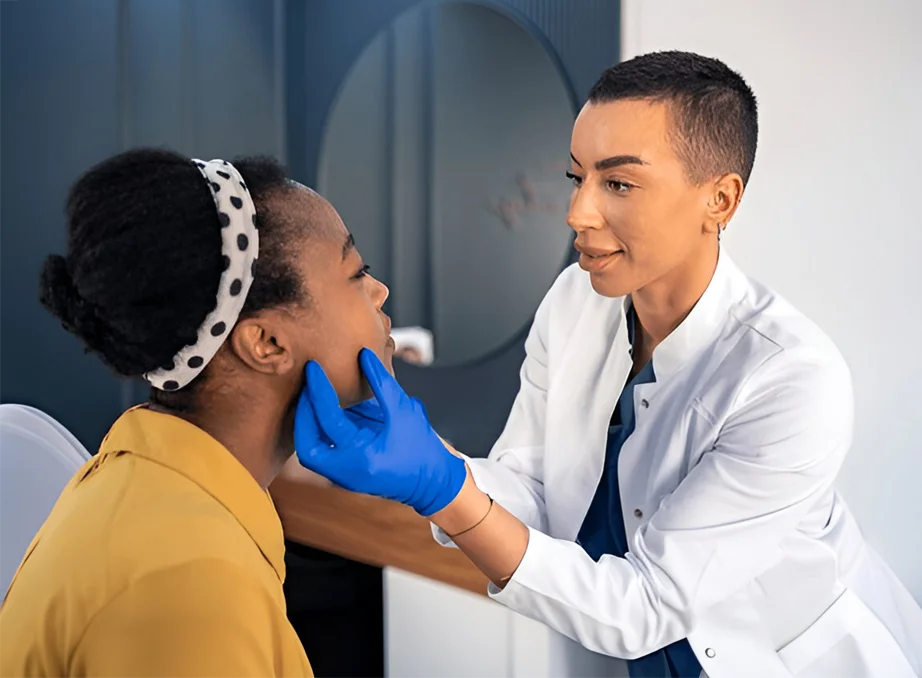LYME DISEASE TESTING SOLUTIONS
Lyme disease can be difficult to diagnose, with symptoms often mimicking other illnesses. At Nava Health, we offer comprehensive testing and integrative solutions to help you find answers and regain your well-being. Our company takes a client-centered approach, combining advanced diagnostics with holistic treatments like IV therapy, acupuncture, and functional nutrition. Whether you are experiencing early signs of Lyme disease or managing long-term symptoms, our specialists are here to provide the care you need.
Schedule Today
*All Fields marked with asterisk are required
What is lyme disease?
Lyme disease is an illness caused by the bacterium Borrelia burgdorferi and is mainly transmitted to humans through the bite of infected black-legged ticks, also known as deer ticks. It’s mostly found in the northeastern and upper midwestern regions of the United States, as well as in parts of Europe and Asia where these ticks live. It is called Lyme disease because it was discovered in the Lyme, Connecticut area in 1975.

What are the symptoms?

Early symptoms usually appear within 30 days of a tick bite. It’s common to experience redness or itching at the bite site, which is due to irritation from the tick’s saliva and not necessarily a symptom of Lyme disease itself.
Acute Lyme Disease Symptoms:
- Rash: May appear as a bull’s-eye, a red ring with a clear center that may grow to several inches in width
- Not always itchy or painful
- Not all rashes resemble a bull’s-eye
- Fever and chills
- Muscle and joint pain
- Stiff neck
- Headache
- Fatigue or weakness
Chronic Lyme Disease Symptoms:
Chronic Lyme disease, also known as post-treatment Lyme disease syndrome (PTLDS), can develop if Lyme disease is not diagnosed and treated promptly. Symptoms can vary widely and may affect multiple systems of the body, leading to significant impairment in daily functioning.
Some common symptoms of chronic Lyme disease include:
- Persistent fatigue and weakness that may be debilitating
- Widespread pain, including muscle aches and joint pain
- Cognitive difficulties, such as memory loss, confusion, and difficulty concentrating (referred to as “brain fog”)
- Neurological symptoms, including headaches, tingling or numbness in the extremities, and facial paralysis
- Sleep disturbances, such as insomnia or excessive daytime sleepiness
- Mood changes, including depression, anxiety, and irritability
- Digestive problems, such as nausea, abdominal pain, and diarrhea
- Sensory disturbances, such as heightened sensitivity to touch, pain, or temperature changes
- Heart palpitations or shortness of breath
- Dizziness or lightheadedness
- Vision problems, including blurred vision, eye pain, or sensitivity to light
- Ringing in the ears (tinnitus) or hearing loss
- Hormonal imbalances leading to menstrual irregularities, hot flashes, or thyroid dysfunction
- Respiratory symptoms, such as cough, shortness of breath, or chest discomfort
- Swollen lymph nodes
- Skin changes, such as rashes, hives, or skin sensitivity
- Intolerance to exercise or exertion, often leading to increased fatigue and malaise
- Difficulty regulating body temperature, leading to excessive sweating or chills
Chronic Lyme disease can significantly impact a person’s quality of life and may require comprehensive treatment approaches, including antibiotics, supportive therapies, and lifestyle modifications.


Testing for lyme and co-infection at nava
Nava’s Lyme and co-infection panel is superior to traditional Lyme testing because:
- Early detection with the ability to identify various tickborne diseases earlier than standard tests to help patients recover quickly
- Unparalleled sensitivity and specificity. Our panel runs on first-of-its-kind silicon microarray technology and chemiluminescence detection to deliver high sensitivity and specificity
- Advanced Lyme and co-infection detection. Our proprietary technology tests antibodies (indirect) and DNA (direct) for the most comprehensive Lyme and co-infection detection
Treating lyme disease
Integrative Treatments for Lyme Disease:
- Ozone & IV Therapies: Promote immune function and combat infection through ozone therapy and IV infusions like NAD+ and micronutrients to support cellular health.
- Acupuncture: Alleviates pain, reduces inflammation, and boosts immunity through targeted stimulation points.
- Functional Nutrition: Personalized diets address nutrient deficiencies, improve gut health, and support detoxification for holistic healing.

Have More Questions About Lyme Disease? Find Out More!
Yes, Lyme disease is often misdiagnosed because its symptoms overlap with other conditions, such as chronic fatigue syndrome, fibromyalgia, multiple sclerosis, and autoimmune diseases. This makes an accurate diagnosis essential. Nava Health’s advanced testing helps differentiate Lyme from similar conditions, ensuring you receive the right treatment plan.
No, Lyme disease does not spread from person to person. It is transmitted through the bite of an infected black-legged tick. However, avoiding tick bites is crucial, especially if you live in or travel to high-risk areas. Wearing protective clothing, using insect repellent, and checking for ticks after outdoor activities can help prevent exposure.
There is evidence suggesting that Lyme disease can be transmitted from mother to baby during pregnancy. While cases are rare, untreated Lyme disease may lead to complications. If you are pregnant and have concerns about Lyme disease, our specialists can guide you through safe testing and treatment options to protect both you and your baby.
Ticks typically need to be attached for 24-48 hours to transmit Lyme disease bacteria. This means that early detection and removal are key in preventing infection. If you find a tick on your skin, remove it carefully with fine-tipped tweezers and monitor for symptoms. If you suspect a recent tick bite, our doctors can provide appropriate testing and preventative solutions.
When left untreated, Lyme disease can progress to more serious health complications. Chronic Lyme symptoms may include persistent fatigue, joint pain, heart issues, neurological problems, and cognitive impairments. Over time, untreated Lyme disease may significantly impact your quality of life. Early detection and a personalized treatment plan can help manage symptoms and prevent long-term damage.
Ticks that carry Lyme disease may also transmit other infections, known as co-infections. Some of the most common co-infections include Babesia, Bartonella, and Anaplasma. These infections can complicate Lyme disease symptoms and make recovery more challenging. Proper testing helps identify co-infections, allowing for a comprehensive, custom treatment approach tailored to your health needs.
Anyone bitten by an infected tick can develop Lyme disease, but certain individuals may be more at risk for severe symptoms. Those with weakened immune systems, pre-existing health conditions, or multiple co-infections may experience more significant effects.
People who go undiagnosed or untreated for long periods are also more likely to develop chronic symptoms. Early diagnosis and a proactive treatment plan are essential for minimizing the impact of Lyme disease and improving long-term health.